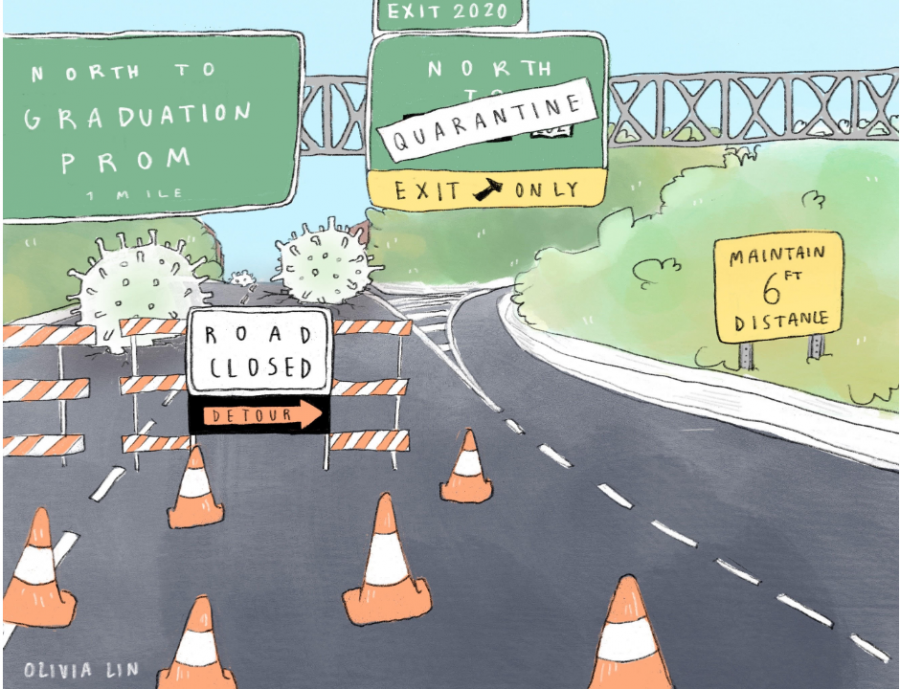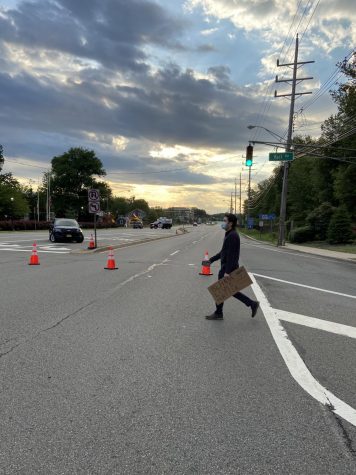Six Feet Apart Is More Than Just Distance
The world has reached an apocalyptic norm in the midst of COVID-19. Individuals are locked indoors, frightened to go outside, flinching at the sight of a stranger less than six-feet away. Citizens are fulfilling their duty to keep everyone safe, even if it means cutting off interaction or making sacrifices to work at the forefront of disease control. Potential disease-carriers are among everyone, threatening people of all ages, the most susceptible being the elderly, infants, and the immunocompromised. More than anyone, researchers and doctors understand the physical and medical effects of COVID-19. They have been taking preventative measures such as wearing protective masks and gloves, and thoroughly washing their hands. Citizens have been encouraged to follow the same preemptive practices, one of which is social distancing to plateau the rise of cases, throughout not only the nation, but worldwide. In our society, global leaders have implemented these rules for the betterment of civilization. Even so, it is essential to recognize what continuous isolation and havoc means for everyone’s mental well-being.
According to Chantelle Booysen, a global mental health advocate, “The first thing that gets negatively affected is our mental well-being…which is the first thing that will help us endure and survive the same crisis.” Maintaining peace of mind sounds like the best solution. However, in times like these, it can be challenging to think positively. COVID-19 has caused a devastating loss of human life and will likely drastically affect social lives in the years to come. The stress of the pandemic alone can trigger an underlying mental illness that was not present before the outburst of the coronavirus.
The trauma of uprooting the norms and values that young adults have known since birth, like social interaction, will likely cause mental health issues in the youth today. A crisis for extended periods “makes it more difficult to access the healthy parts of the brain,” as indicated by Chantelle Booysen in an article from Voices of Youth. Without regular social communication, mood and mental stability drastically change. Individuals are becoming increasingly anxious that themselves or a loved one will contract the disease. The validation that their family and friends are staying well is shaken by a lack of person-to-person interaction. Anxiety is paired with a state of depression; individuals are beginning to feel more hopeless in these trying circumstances. This detrimental pairing of fear and sadness may make one feel that the fight to end the pandemic is no longer worthwhile.
Young people are especially struggling to cope as this immense, sudden change to society’s function is impacting major milestones they planned to live through. With “school closures and canceled events, many teens are missing out on some of the biggest moments of their lives,” like prom, graduation, relationships, and other experiences that shape their memories and who they are, as explained in an article by UNICEF by Mandy Rich. As humans, we crave communication, companionship, and the normality of everyday life, like going to school and work every day. These things we rely on so greatly have been interrupted by COVID-19, disrupting the stability of our lives and mental state.
Katherine Ponte from The National Alliance on Mental Illness affirms that although the news is necessary, “reading and watching news about the outbreak can be detrimental to mental health.”. Constant exposure to stress-inducing information will only increase anxiety, negatively impacting how we respond to the pandemic. Realistically, essential information and guidelines cannot be ignored as health is of the utmost importance. However, mental health is just as essential. The Centers for Disease Control and Prevention explicates that there are ways to to take care of oneself and others during this time of crisis. The center suggests, aside from taking breaks from watching or listening to the news, “taking care of your body, making time to unwind, and connecting with others” to keep your mental health in check.
Freshman Noah T. shared his perspective on the stress he faces while in quarantine. “Over this quarantine “break” some of the most stressful things are when two teachers assign assessments on the same day and I have to still do larger projects, especially in groups,” he stated. This may be a common sentiment among Morris Hills students. Even amid a worldwide pandemic, the stress of school remains. Group projects and work become more of a hassle in a time of limited interaction. Noah added, “The most relaxing things or the “de-stressors” of this quarantine break for me have been going outside and going on runs.” Once again, staying active is necessary for a healthy mind.
Despite the negative impact of COVID-19, we have found new ways of keeping in touch with others through social platforms in lieu of social distancing. With this technology, people are coping with the stress and anxiety associated with school, work, and everyday life during the pandemic. Society needs to prioritize physical and mental well-being so that the world can move forward together and remain hopeful that we will overcome the pandemic. Although the world is a sinister place at the moment, it is not only time to unite as a society, but it is the time to lessen mental instability, primarily in younger generations, during the outbreak of COVID-19.





